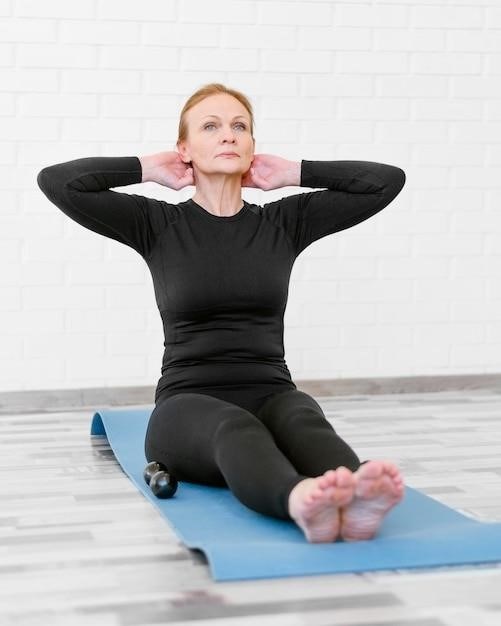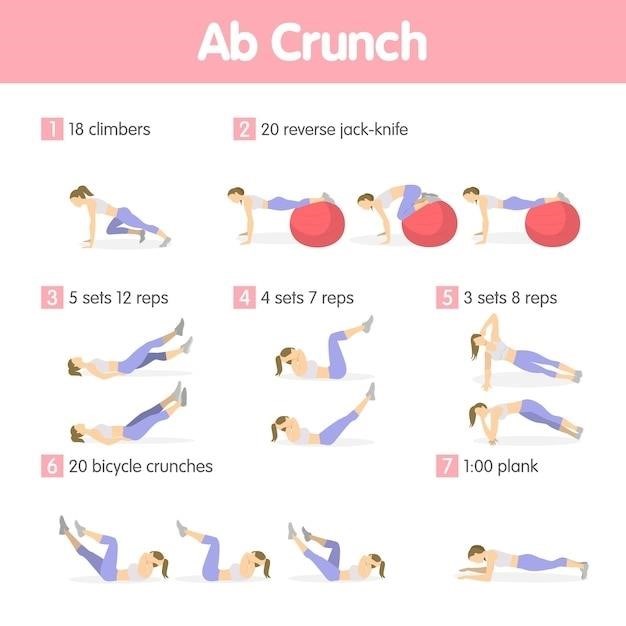Apraxia of Speech Exercises for Adults
Apraxia of speech is a motor speech disorder that affects the ability to plan and execute the movements needed to speak. It can be caused by stroke‚ brain injury‚ or other neurological conditions. People with apraxia of speech may have difficulty with articulation‚ prosody‚ and language. This article will discuss different types of apraxia exercises for adults‚ including articulation‚ prosody‚ and language-based exercises. We will also discuss how to use technology for apraxia exercises and how to find resources for apraxia exercises.
Understanding Apraxia of Speech
Apraxia of speech (AOS) is a neurological disorder that affects the ability to plan and execute the movements required for speech. It is not a problem with the muscles of the mouth‚ but rather a difficulty in the brain’s ability to send the correct signals to the muscles. This can result in a variety of speech problems‚ including⁚
- Difficulty with articulation (pronouncing sounds correctly)
- Slow and effortful speech
- Inconsistent errors
- Difficulty with repetition
- Problems with prosody (the rhythm and intonation of speech)
AOS can be caused by a variety of factors‚ including stroke‚ brain injury‚ and neurological diseases. It can affect people of all ages‚ but it is more common in adults. It is important to note that AOS is not a language disorder. People with AOS can understand language and have normal cognitive function. However‚ they may have difficulty expressing themselves verbally.
Types of Apraxia Exercises
Apraxia of speech exercises aim to improve the ability to plan and execute the movements needed for speech. These exercises can be categorized into several types‚ each targeting different aspects of speech production.
- Articulation Exercises⁚ These exercises focus on improving the accuracy and consistency of sound production. They may involve practicing specific sounds or sound combinations‚ often using visual aids like mirrors or pictures. Examples include tongue twisters‚ repetition drills‚ and sound-matching activities.
- Prosody Exercises⁚ This type of exercise aims to improve the rhythm‚ intonation‚ and stress patterns of speech. They can involve practicing different sentence structures‚ reading aloud with varying emotions‚ or imitating prosodic patterns.
- Language-Based Exercises⁚ These exercises focus on improving the ability to use language effectively‚ such as understanding and producing grammatical structures‚ expanding vocabulary‚ and improving communication skills. Examples include story retelling‚ picture descriptions‚ and role-playing activities.
The specific exercises used will depend on the individual’s needs and the severity of their apraxia. It’s crucial to work with a speech-language pathologist to determine the appropriate exercises and create a personalized treatment plan.
Articulation Exercises
Articulation exercises form the cornerstone of apraxia treatment‚ targeting the precise movements of the tongue‚ lips‚ and jaw needed to produce individual sounds. These exercises can be tailored to address specific sound errors‚ such as mispronouncing consonants or vowels.
Here are some common articulation exercises⁚
- Sound Isolation⁚ This involves practicing individual sounds in isolation‚ focusing on the correct placement and movement of the articulators. For example‚ the individual might repeat the sound /p/ while observing their lip movements in a mirror.
- Sound Combinations⁚ This involves combining individual sounds into syllables and words. For example‚ the individual might practice saying “ba-ba-ba” or “ma-ma-ma” before moving on to words like “ball” or “mama.”
- Repetition Drills⁚ These exercises involve repeating words or phrases with increasing speed and complexity. This helps to improve the consistency and automaticity of speech production;
- Minimal Pairs⁚ This exercise focuses on contrasting words that differ only in one sound. For example‚ the individual might practice saying “pat” and “bat‚” or “pin” and “bin‚” focusing on the difference in the initial consonant sound.
Articulation exercises often incorporate visual aids like mirrors‚ pictures‚ or diagrams to help individuals visualize the correct movements and positions of the articulators.
Prosody Exercises
Prosody exercises focus on enhancing the rhythm‚ stress‚ and intonation of speech‚ elements that give language its natural flow and expressiveness. Individuals with apraxia often struggle with prosody‚ leading to monotone or robotic speech.
Here are some common prosody exercises⁚
- Sentence Stress⁚ This exercise involves emphasizing specific words in a sentence to convey meaning. For example‚ the individual might practice saying “I want a cookie‚” “I want a cookie‚” and “I want a cookie‚” highlighting the different meanings conveyed by stress.
- Intonation Patterns⁚ This involves practicing different intonation patterns‚ such as rising intonation for questions or falling intonation for statements. The individual might practice saying “What is your name?” with a rising intonation and “My name is John” with a falling intonation.
- Rhythm and Pace⁚ This exercise involves practicing speaking at different speeds and with different rhythms. The individual might practice saying a phrase like “The cat sat on the mat” at a slow pace‚ then at a faster pace‚ and then with a rhythmic pattern‚ such as “The cat sat on the mat.”
- Emotional Expression⁚ This involves practicing expressing different emotions through speech. The individual might practice saying a sentence like “I am happy‚” “I am sad‚” or “I am angry” with different emotional tones.
Prosody exercises can be incorporated into everyday conversations‚ reading aloud‚ or storytelling activities. They can also be enhanced with visual aids‚ such as pictures or videos‚ to demonstrate the intended intonation and rhythm.
Language-Based Exercises
Language-based exercises aim to address the cognitive and linguistic aspects of apraxia‚ targeting areas such as vocabulary retrieval‚ sentence formulation‚ and comprehension. These exercises help individuals with apraxia improve their ability to understand and produce language‚ ultimately enhancing their communication skills.
Here are some examples of language-based exercises⁚
- Word Retrieval Practice⁚ This involves using various techniques to help individuals retrieve words they are struggling to access. Exercises can include picture naming‚ word association games‚ or completing sentences with missing words.
- Sentence Construction⁚ These exercises focus on building grammatical skills‚ encouraging individuals to create complete sentences. Activities might include arranging words in order to form a sentence‚ writing sentences based on pictures‚ or retelling stories in their own words.
- Comprehension Tasks⁚ These exercises aim to improve understanding of spoken and written language. Activities can include listening to stories and answering comprehension questions‚ reading passages and identifying the main idea‚ or following instructions.
- Storytelling and Retelling⁚ Engaging in storytelling activities allows individuals to practice using language in a more natural and spontaneous way. They can retell familiar stories‚ create original stories‚ or participate in role-playing scenarios.
Language-based exercises can be tailored to the individual’s specific needs and challenges. They can be incorporated into therapy sessions‚ home practice‚ or everyday interactions to promote ongoing improvement in language skills.
Using Technology for Apraxia Exercises
Technology has revolutionized the way apraxia exercises are conducted‚ offering a range of tools and resources to support individuals in their journey toward improved communication. These technological advancements provide opportunities for engaging‚ interactive‚ and accessible practice‚ making it easier for individuals to engage in exercises at home or on the go.
Here are some ways technology can enhance apraxia exercises⁚
- Speech Therapy Apps⁚ Numerous apps are specifically designed for individuals with apraxia‚ providing interactive exercises that target different aspects of speech‚ including articulation‚ prosody‚ and language. Examples include Constant Therapy‚ SmallTalk‚ and Apraxia Coach.
- Video-Based Exercises⁚ Videos can be used to demonstrate correct articulation or provide visual cues for specific sounds or movements. Individuals can watch and imitate the exercises‚ providing a visual reference for practice.
- Speech Recognition Software⁚ This technology allows individuals to practice their speech and receive immediate feedback on their pronunciation. It can also provide personalized exercises based on their specific speech patterns.
- Teletherapy⁚ Online platforms enable individuals to receive speech therapy remotely‚ allowing them to access treatment from qualified professionals regardless of location. Teletherapy sessions can incorporate interactive exercises and video conferencing for personalized support.
These technological tools offer a convenient and engaging way for individuals with apraxia to practice their speech skills‚ promoting progress and fostering confidence in communication.
Home Exercises for Apraxia
While working with a speech-language pathologist is crucial for individuals with apraxia of speech‚ incorporating home exercises can significantly complement professional therapy and enhance progress. These exercises help reinforce learned skills‚ improve articulation‚ and build confidence in everyday communication.
Here are some home exercises that can be beneficial for adults with apraxia⁚
- Articulation Drills⁚ Focus on specific sounds that are challenging. Repeat words‚ phrases‚ and sentences containing these sounds. Use mirrors to visualize lip and tongue movements‚ ensuring correct placement.
- Prosody Practice⁚ Work on the rhythm‚ intonation‚ and stress patterns of speech. Read aloud passages‚ focusing on varying pitch and emphasis to convey meaning.
- Language Games⁚ Engage in word games‚ such as rhyming‚ categorizing‚ or describing objects‚ to improve language processing and retrieval.
- Storytelling⁚ Create stories or retell familiar stories‚ focusing on clear articulation‚ appropriate prosody‚ and natural pacing.
- Singing⁚ Singing can help improve breath control‚ articulation‚ and prosody. Choose songs that are familiar and enjoyable.
- Mirror Practice⁚ Observe and imitate lip and tongue movements while looking in a mirror. This helps visualize and refine articulation techniques.
Remember to practice consistently‚ even for short durations‚ and to celebrate small victories. Maintaining a positive attitude and engaging in regular exercises can contribute to significant improvements in speech and communication.
Working with a Speech-Language Pathologist
A speech-language pathologist (SLP) plays a vital role in the treatment of apraxia of speech. They are highly trained professionals who can assess your specific needs‚ develop a personalized treatment plan‚ and provide ongoing support and guidance.
Here’s how working with an SLP can benefit you⁚
- Comprehensive Assessment⁚ SLPs conduct thorough assessments to identify the specific challenges you face with speech production. They evaluate your articulation‚ prosody‚ language skills‚ and overall communication abilities.
- Tailored Treatment Plan⁚ Based on the assessment‚ the SLP designs a personalized treatment plan that addresses your individual needs. They may incorporate various techniques‚ including articulation drills‚ prosody exercises‚ and language-based therapy.
- Specialized Techniques⁚ SLPs are proficient in using a variety of techniques to improve speech production‚ such as⁚
- Articulation Therapy⁚ Focuses on improving the precision and clarity of sounds.
- Prosodic Therapy⁚ Addresses the rhythm‚ intonation‚ and stress patterns of speech.
- Language Therapy⁚ Improves language processing and retrieval skills.
- Ongoing Support⁚ SLPs provide ongoing support and guidance throughout your treatment journey. They monitor your progress‚ adjust the treatment plan as needed‚ and offer strategies for managing communication challenges in everyday life.
If you are experiencing difficulties with speech‚ it is highly recommended to consult with a speech-language pathologist for a comprehensive evaluation and personalized treatment plan.

Resources for Apraxia Exercises
There are a variety of resources available to help individuals with apraxia of speech access exercises and support. These resources can be invaluable in supplementing therapy‚ practicing at home‚ and staying motivated on the journey to improved speech. Here are some avenues to explore⁚
- Speech-Language Pathology Websites⁚ Many speech-language pathology websites offer free resources‚ such as printable worksheets‚ videos‚ and articles. These resources can provide helpful exercises‚ tips‚ and information on apraxia of speech.
- Apraxia Support Groups⁚ Joining an online or in-person apraxia support group can connect you with others who understand your experiences and provide a sense of community. These groups can offer valuable advice‚ share tips‚ and provide emotional support.
- Mobile Apps⁚ Several mobile apps are designed to help individuals with apraxia of speech improve their articulation‚ prosody‚ and language skills. These apps often include games‚ exercises‚ and progress tracking features.
- Online Courses and Workshops⁚ Some organizations offer online courses and workshops specifically for individuals with apraxia of speech and their families. These courses can provide in-depth information‚ practical exercises‚ and guidance on managing the condition.
- Books and Articles⁚ There are numerous books and articles written on apraxia of speech‚ including those that focus on exercises‚ treatment strategies‚ and coping mechanisms. These resources can provide valuable information and insights.
Remember to consult with your speech-language pathologist before using any new exercises or resources to ensure they are appropriate for your individual needs and treatment plan.
